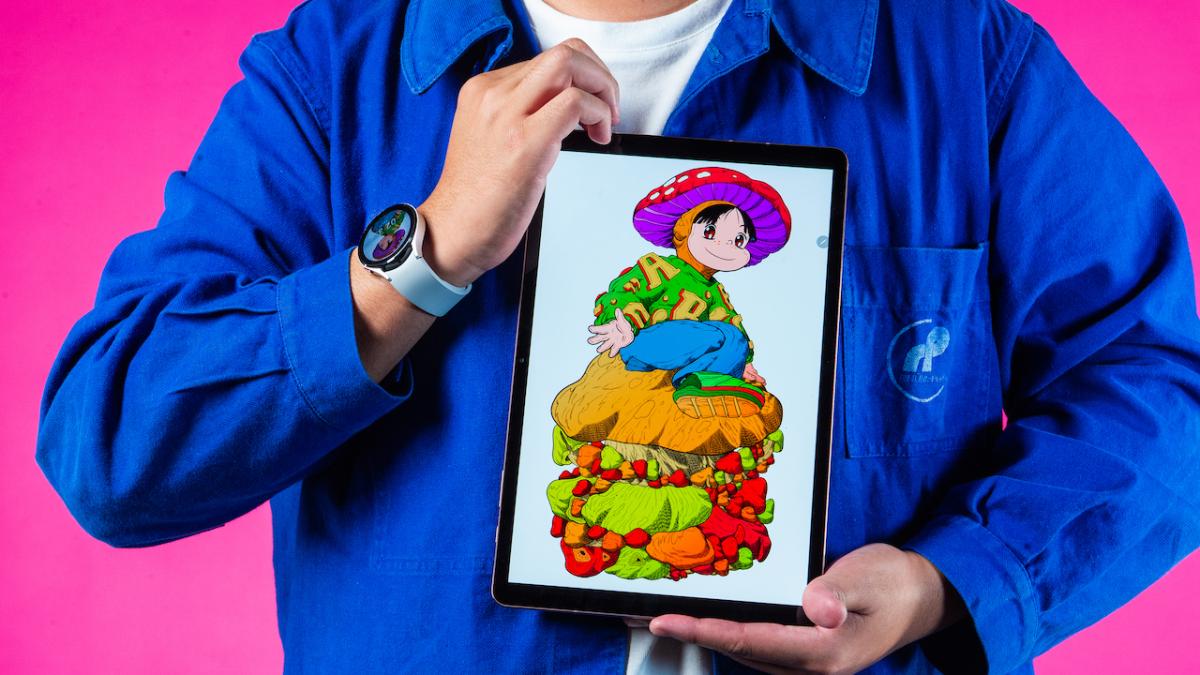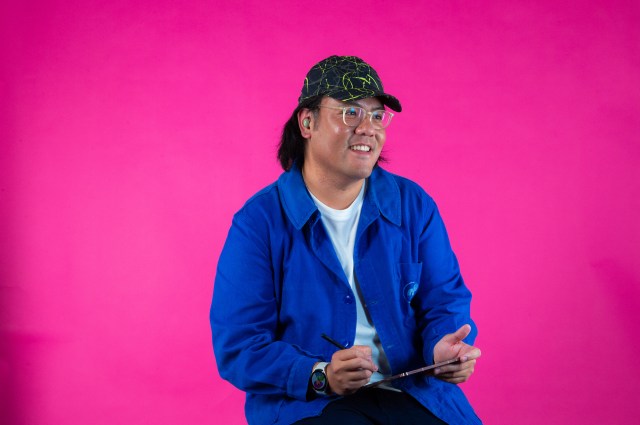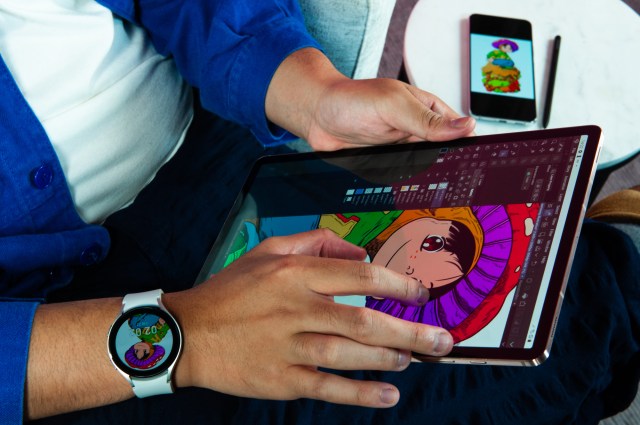
What happens when you chuck 2000s era Japanese Manga, the spectacle of K-Pop, and the panache of pro-wrestling into a human-sized pot and stir it nice and vigorously?
You get Sydney-born multidisciplinary artist Andrew Yee and his surreal style of comic book-inspired illustrations which blur the line between reality and fantasy, offering a meditative glimpse concepts of personal identity.
We caught up with Andrew to find out more about what inspires him, how he creates his idiosyncratic works, and the meaning behind his aesthetic and style.

PTV: Hey Andrew, what is your preferred art medium?
Andrew: Even though I’ve experimented in a number of mediums, my bread and butter will always be drawing and illustration.
What does creativity mean to you?
For me, creativity is all about having the ability and imagination to communicate ideas.
How would you describe your style?
I would probably describe my style as strange. I’m always trying to strike the perfect balance between being meticulous and playful in a childlike way. Growing up, I loved to pore over the splash pages in my favourite mangas. I think I just loved the fine details and etchings drawn over big scenes filled with characters and action. It’s a style that stuck with me, and I wanted to incorporate it when I started taking drawing more seriously.
When I create a new piece, I always feel like the greater attention to detail, the more it will come to life. However, I still want to make sure the works aren’t just a mess of lines. I’m always looking to place rich detail to accentuate the idea or story I’m communicating instead of distracting from it.

Where do you draw inspiration from?
I have always loved art styles with a strong sense of character and world-building. In the beginning, I drew inspiration from illustrators working in anime and comics. I’d try to imitate visual cues from the likes of Katsuhiro Otomo and Osamu Tezuka.
I feel like I’ve developed my artistic abilities and identity to where inspiration can come from anywhere. In recent years, I have drawn a lot of ideas from indie comics, film, nature, and even K-pop. A sign that something has struck a chord with me is if I need to doodle down an idea after I’ve experienced it — or at the very least scribble down a sentence in my notebook. It’s more of a case now of what sticks in and stimulates my mind.
What initially inspired you to pursue a creative medium?
My twin brother and I were always drawing from a young age. We’d influence and motivate each other to create something we saw in a comic or whatever crazy idea we had on our minds.
I remember from even back then that I loved the feeling of being hands-on with creating. As I’ve gotten older, it’s something that has always stayed constant. No matter how much my life has changed, I’ve always eventually found my way to a pen and piece of paper.
What are the essential tools you use to help your work come to life?
When I was a kid, all I needed was a pencil, a roll of cartridge paper, and a carpeted floor to use as a makeshift drawing table. I am happy to say that my tools have expanded considerably since then.
I mainly use my phone, laptop, tablet, notebook, pencils, felt tip pens, and big drawing pad. As my ideas and images have become more ambitious, it’s been essential for me to utilise a combination of analogue and digital tools.
What does your creative process look like?
My creative process will usually start with flicking through my notebook and seeing what I’ve scribbled down in the past. I’m generally looking for something that I’ve doodled or a little phrase I’ve written down that I want to expand on. Sometimes it can be a reference to a music video I watched on Youtube, an abstract set of words like ‘mushroom-boy’, or a two-second drawing that looks like an amateur Picasso piece.
Then I will start whipping up a sketch with pencils and look up some reference images. Once I have a composition that I’m happy with, I’ll begin using felt tip pens for the linework or scan the sketch and use digital brushes. After that, I will start colouring digitally and go over any changes I want to make.
What piece of work are you most proud of? Can you describe the story behind it?
In my career, I’ve been lucky to have been a part of some great projects and exhibitions, which have been pinch-me kind of moments. Recently I was a part of the city of Sydney’s Lunar New Year Festival, taking part in the Banner Galleries. I had five designs celebrating the year of the tiger and the Chinatown area post-Covid-19 lockdowns. Each piece drew from personal experiences hanging around Haymarket and eating at several restaurants which have now shut their doors for good.
When I came up with the designs, the first one I drew was ‘Marigold’, which showed a tiger rising from a bamboo steamer you’d find at yum cha. I remember thinking after finishing the piece that this would be something people would find at the very least cool. Fast forward a couple of months, and it was surreal to see the piece flapping in the wind above Martin Place. The response from people, either expressing how much they liked it or sharing their stories, was extremely gratifying and was beyond my expectations. It was amazing to do work on such a big scale while paying tribute to businesses near and dear to me.
What are some of the biggest challenges that come with creating?
For me, the biggest challenge is getting over the “creative block”. Sometimes I’ll go for periods at a time where the ideas and inspiration just aren’t clicking together. I can sense it coming on when the experience of drawing feels difficult and exhaustive. It’s something that I’ve learned to work through and not let it disrupt my workflow too much. If it gets severe, I’ll put down the pen and try to reset mentally — eating out anywhere in Eastwood is always a big help.
What advice would you give to anyone wanting to start creating visual art?
The key to creating visual work is to go for quantity over quality. Don’t be too concerned with having everything you make be perfect. Aim for something you’re happy with, which gives you a sense of satisfaction. Once you’ve finished one piece, move on to the next and see what else you want to express.
I can guarantee that you’ll look back at past works and cringe a little inside. But eventually, you’ll have evolved and strengthened your practice to a point where you’ve created a unique visual identity for yourself.
Are there any projects you’re working on at the moment you’d like to talk about?
I am currently putting the finishing touches on a whole new series of works. I haven’t come up with a title yet, but I’m working on it. In the coming months, I’ll begin looking for exhibition spaces or come up with another way to release them onto the world.
To read up on other artists and their stories, head on over to our Going Beyond hub.
Feeling inspired? Check out the vast range of devices in the Samsung Ecosystem for all your creative needs — so you can be you, your way.



